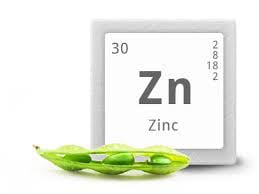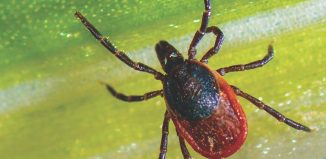Macular degeneration: significant steps forward
Age-related macular degeneration (AMD) is the number one cause of severe central vision loss and blindness in patients over age 65 (1). There are several different stages of AMD. The early stage is referred to as dry. Then, there is the intermediate stage and the late stage, which is made up of two forms: wet (neovascular) and geographic atrophy, an advanced form of the dry.
This is not a lesson in macular degeneration’s pathology, but it is important to understand its rudimentary signs and symptoms. In the early stage, vision is not usually affected. So, how do we know when someone has the disease? Because of drusen, substances composed of cholesterol and proteins. Drusen are described as white-yellowish blobs below the retina, which is found in the back of the eye and can be seen with an indirect ophthalmoscope in a dilated eye exam.
Potentially reversing early-stage disease
For the longest time, we did not know if it were possible to reverse the disease, even in its early stages. However, a recent study’s results suggest we can. The reason is that there may be a relationship between cardiovascular disease (CVD) and AMD. Let me explain. The most common cause of CVD is atherosclerosis, or plaque buildup, made up of cholesterol deposits in the inner lining of the blood vessels. Cholesterol also builds in a layer just below the retina, called Bruch’s membrane. Both diseases also have underlying inflammation.
In this small, prospective (forward-looking) pilot study, treatment with high-dose atorvastatin 80 mg appears to have possibly dissolved the drusen, resulting in reversal of early-stage disease (2). Of the patients treated, approximately 40 percent were deemed responders to the drug. A responder was defined as a greater than 50 percent reduction in drusen volume. And of those, eight of the 10 had a near-complete response after one year. However, it is not clear that reducing drusen volume actually prevents progression. Interestingly both responders and nonresponders had similar blood cholesterol levels.
This was a small trial with only one group and only 23 patients. However, the results are encouraging. Hence, this is the first step toward treating early AMD. Atorvastatin is from the statin family of drugs. It reduces both cholesterol levels and inflammation. However, there are weaknesses with this study such as its small size, lack of placebo group and atorvastatin’s side effects. The study used the highest dose, and more than 20 percent of patients suffered side effects, such as gastrointestinal upset and myalgias, muscle pain. The FDA does not want physicians to start patients on such a high statin dose because of its side effects. This could possibly be offset by taking a supplement, CoQ10 200 mg, since statins deplete CoQ10 levels.
Therefore, the next step is obviously a much larger study to confirm the results, one that may also be a dose-ranging study, to identify the lowest possible dose of atorvastatin or other statins that could achieve the same efficacious results. Interestingly, a vegetable-rich, plant-based diet has similar effects to statins, at least systemically. So, a study could use both diet and statins.
The intermediate stage?
In this stage, drusen have either grown in size and/or there are pigment changes in the retina itself (3). In two randomized controlled trials, the AREDS and AREDS2 studies, results showed that supplements may be able to reduce the risk of disease progression to the late stages, not reverse it (4, 5).
In these studies, specific formulations were used. It turns out that zinc and vitamins C and E may be the most important micronutrients in these supplements. Zinc by itself showed a reduction. The micronutrient doses were vitamin C 452 mg, vitamin E 400 IU, zinc 69.6 mg and copper 2 mg. In the AREDS2 study, the researchers added lutein and zeaxanthin, which reduced the risk of progression further, from 25 to 30 percent, but only in those who did not get significant amounts from their diets. Fish oil in the form of DHA 350 mg and EPA 650 mg did not have any effect in reducing the risk of disease progression.
On an interesting note, zinc also showed that it could reduce the risk of dying from all causes by 27 percent in the AREDS analysis (6).
Caveat emptor when it comes to supplements for AMD. A study examined 11 supplements from five different companies (7). Only four actually contained what was in the AREDS studies. Another important thing to note about the supplements that do contain proper micronutrient amounts is that these supplements do not prevent AMD, nor should they be used in early AMD; they were meant for intermediate AMD. In the medical community, we sometimes make that mistake.
How about the late stage?
As mentioned above, late-stage AMD is made up of two different forms. Fortunately, 85 to 90 percent of AMD is earlier stages of the disease and progression does not always occur. In both forms of advanced AMD, central vision is significantly compromised. However, in the wet (neovascular) type, there are several different intravitreal (into the eye) injection medications that significantly improve vision.
The most commonly used medications include ranibizumab (Lucentis), bevacizumab (Avastin) and aflibercept (Eylea). They prevent the growth of new blood vessels in the eye that may leak and cause significant central vision disruption. All three medications are in a class referred to as VEGF (vascular endothelial growth factor) inhibitors.
The good news is that eye injections originally had to be done every four weeks. However, trials have shown that the injections can be used as needed or on a treat-and-extend basis (8). In other words, injection frequency can be individualized.
Is prevention possible?
When it comes to AMD, prevention is possible with lifestyle modifications. Study after study shows this. The basis for this effect is a high-nutrient diet that includes vegetables, fruits and fish. Exercise also plays an equally important role. Here are two studies to reinforce this.
In the Rotterdam Study I, a prospective (forward-looking) observational study, results showed an almost 50 percent reduction in risk of developing either early AMD or late-stage AMD (9). The components of the diet included at least seven ounces of vegetables per day, at least two servings of fruit per day and two servings of fatty fish per week. Sadly, only 3.5 percent were able to consume this very modest combination of servings. Two servings of fatty fish, by itself, reduced risk 26 percent. The study had 4,797 participants who were at least 55 years old, and it had a mean duration of nine years.
In the CAREDS study, results showed that both exercise and a plant-based diet, separately or on their own, had similarly impressive potential protective effects, reducing risk by approximately 50 percent (10). Diet, plus exercise and not smoking, decreased risk even more, by a whopping 71 percent. Again, congruous with the diet above, these results were based on a Mediterranean-type diet. There were 1,313 female participants, ages 55 to 74 at the study’s start, and a six-year study duration.
The bottom line is that the use of statin medications may be a new approach to preventing progression and possibly reversing early-stage macular degeneration. But the tried and true method of prevention is lifestyle modifications including a high-nutrient, plant-based diet, with the addition of fish, as well as exercise.
References:
(1) Ophthalmology 2008; 115:116–126. (2) EBioMedicine. 2016;5:198-203. (3) nei.nih.gov/health/maculardegen/armdfacts. (4) Arch Ophthalmol. 2001;119(10):1417-1436. (5) JAMA. 2013;309(19):2005-2015. (6) Arch Ophthalmol. 2004;122(5):716-726. (7) Ophthalmology. 2015;122(3):595-599. (8) Int Ophthalmol Clin. 2015;55(4):103-112. (9) ARVO 2015; Abstract 3762-C0004. (10) Arch Ophthalmol. 2011;129(4):470-480
Dr. Dunaief is a speaker, author and local lifestyle medicine physician focusing on the integration of medicine, nutrition, fitness and stress management. For further information, visit www.medicalcompassmd.com or consult your personal physician.







